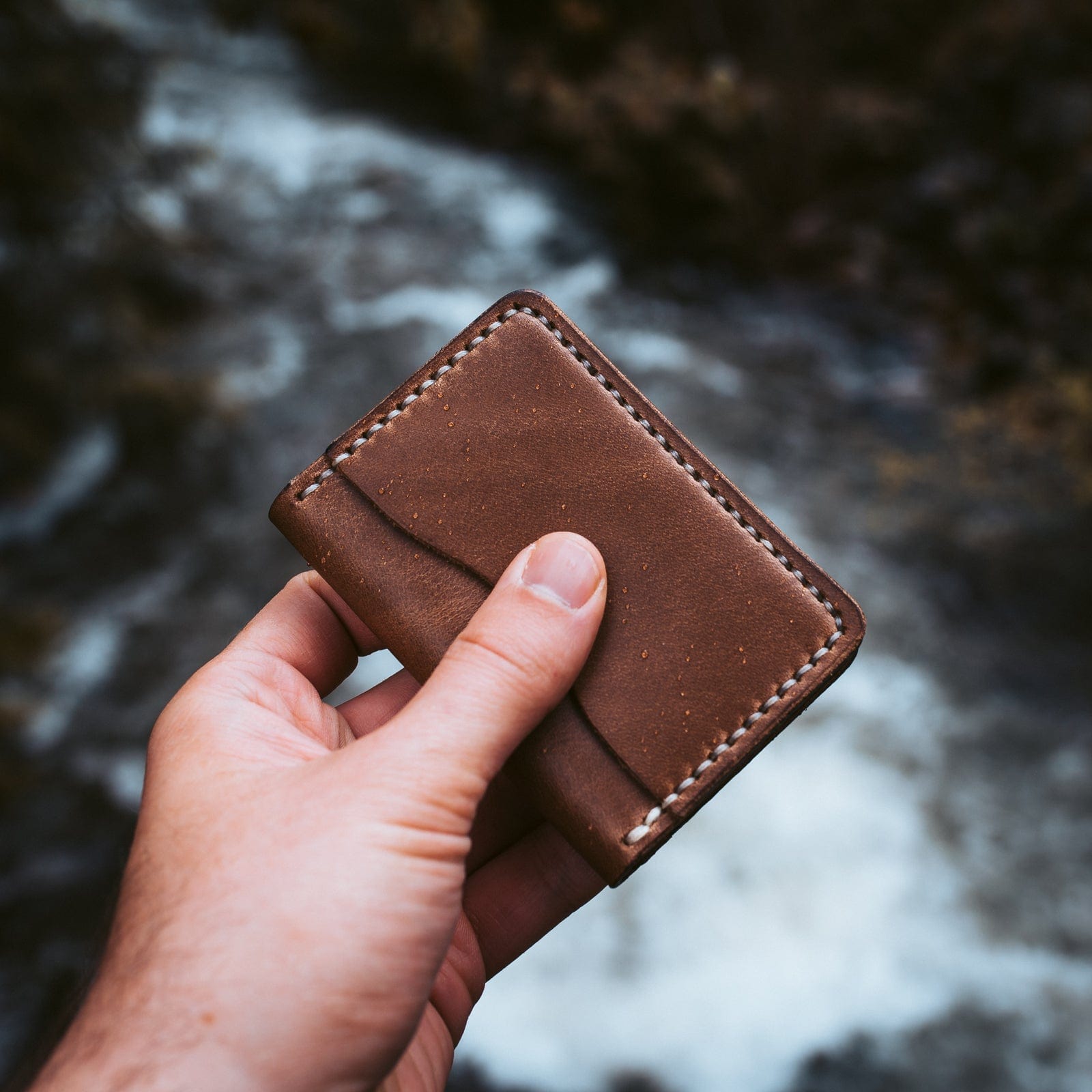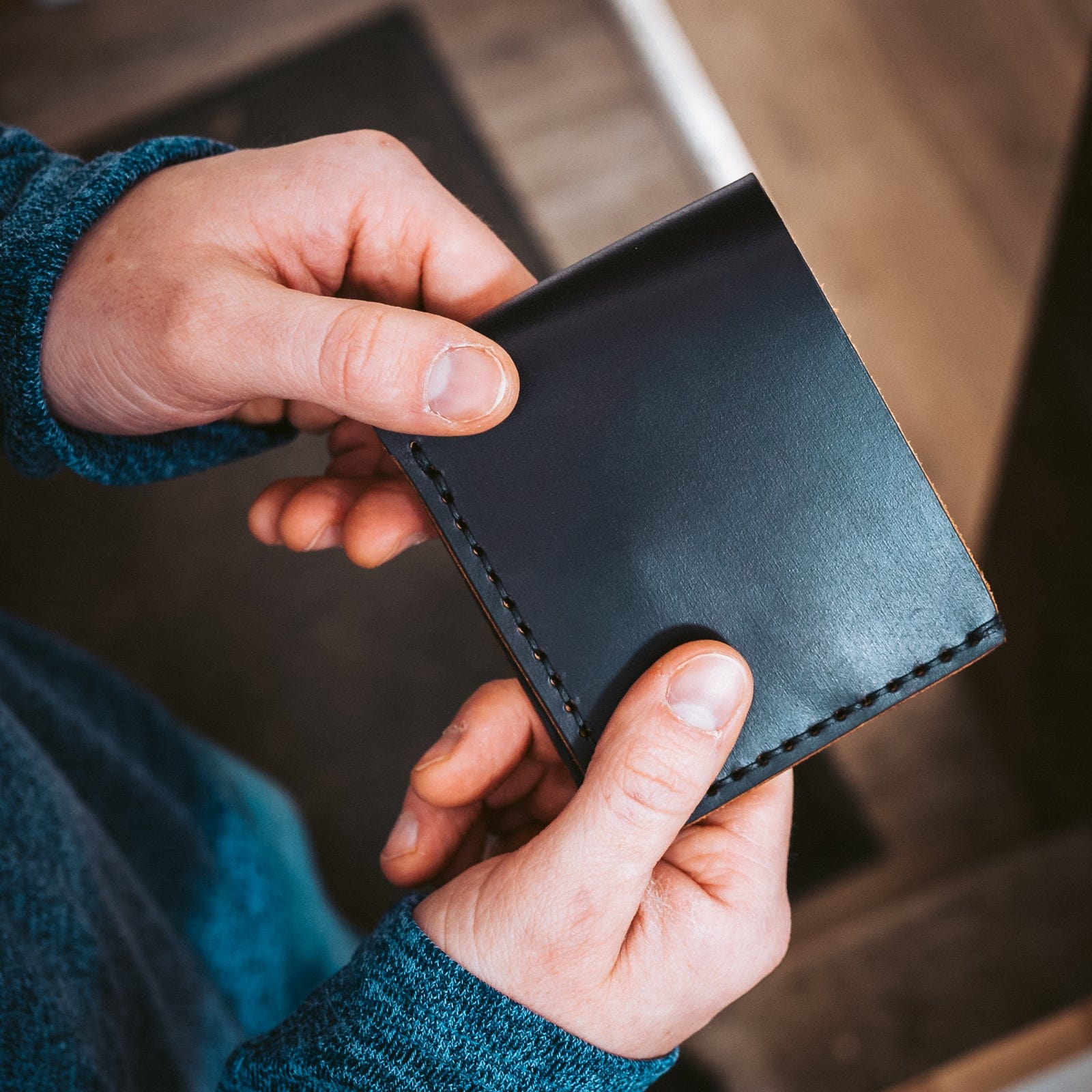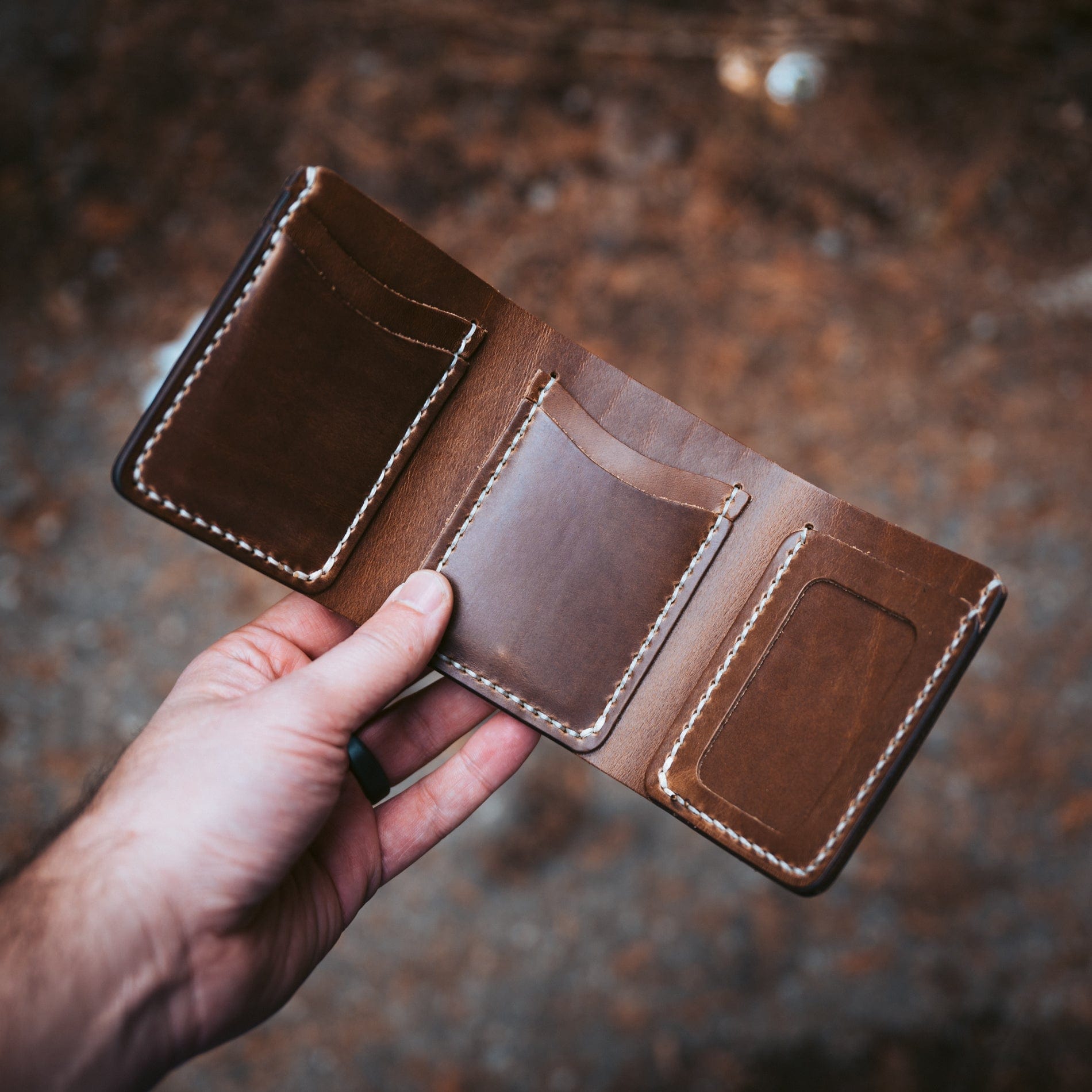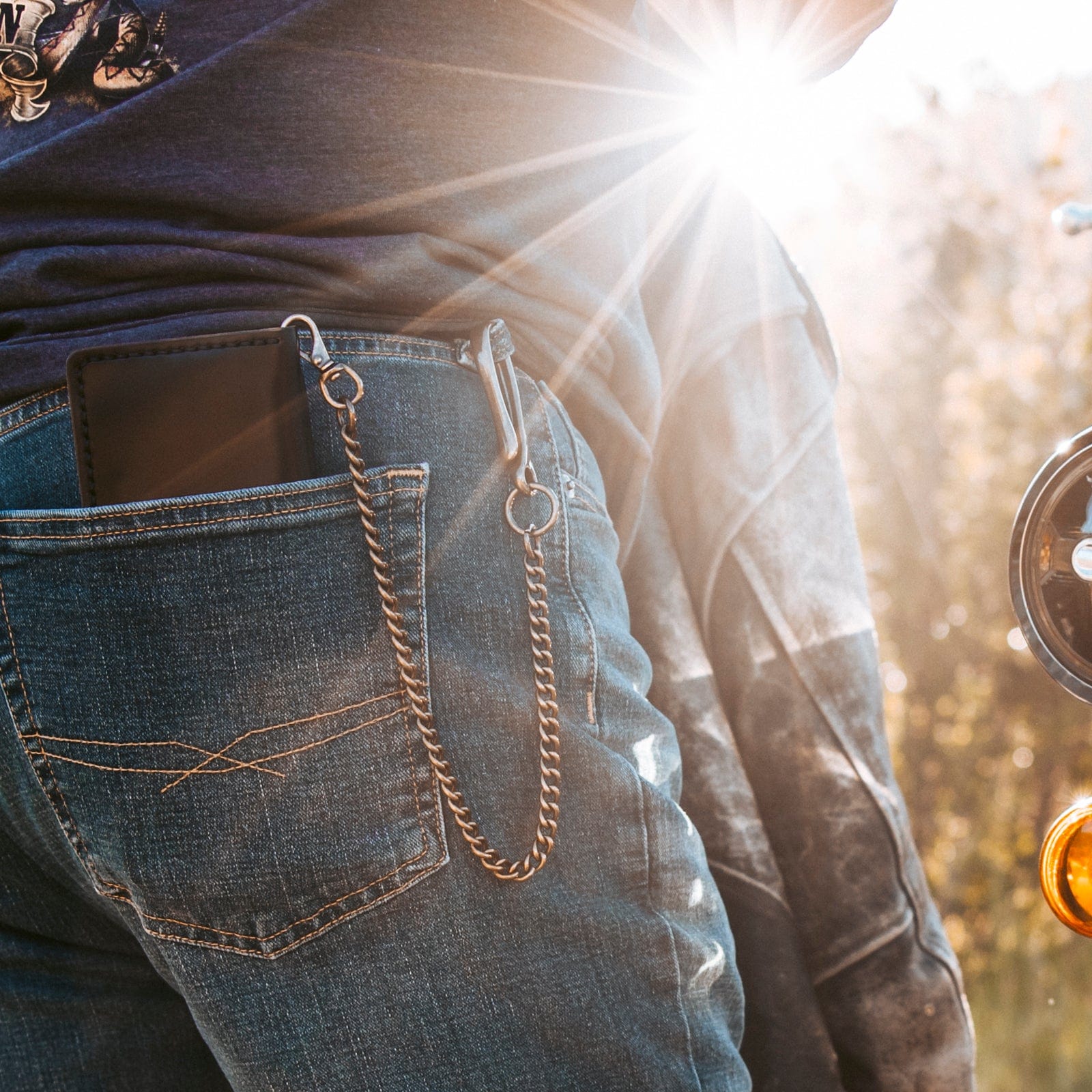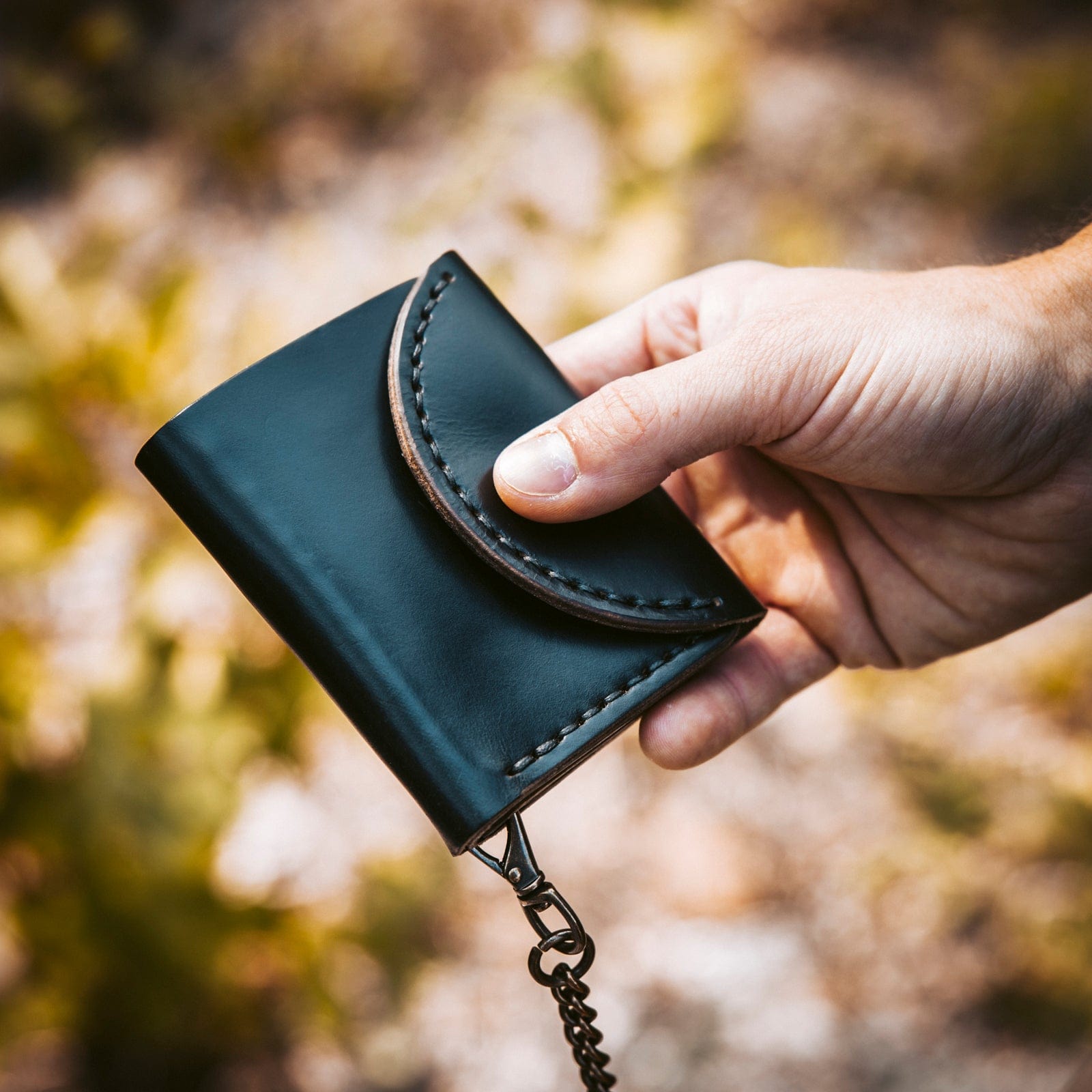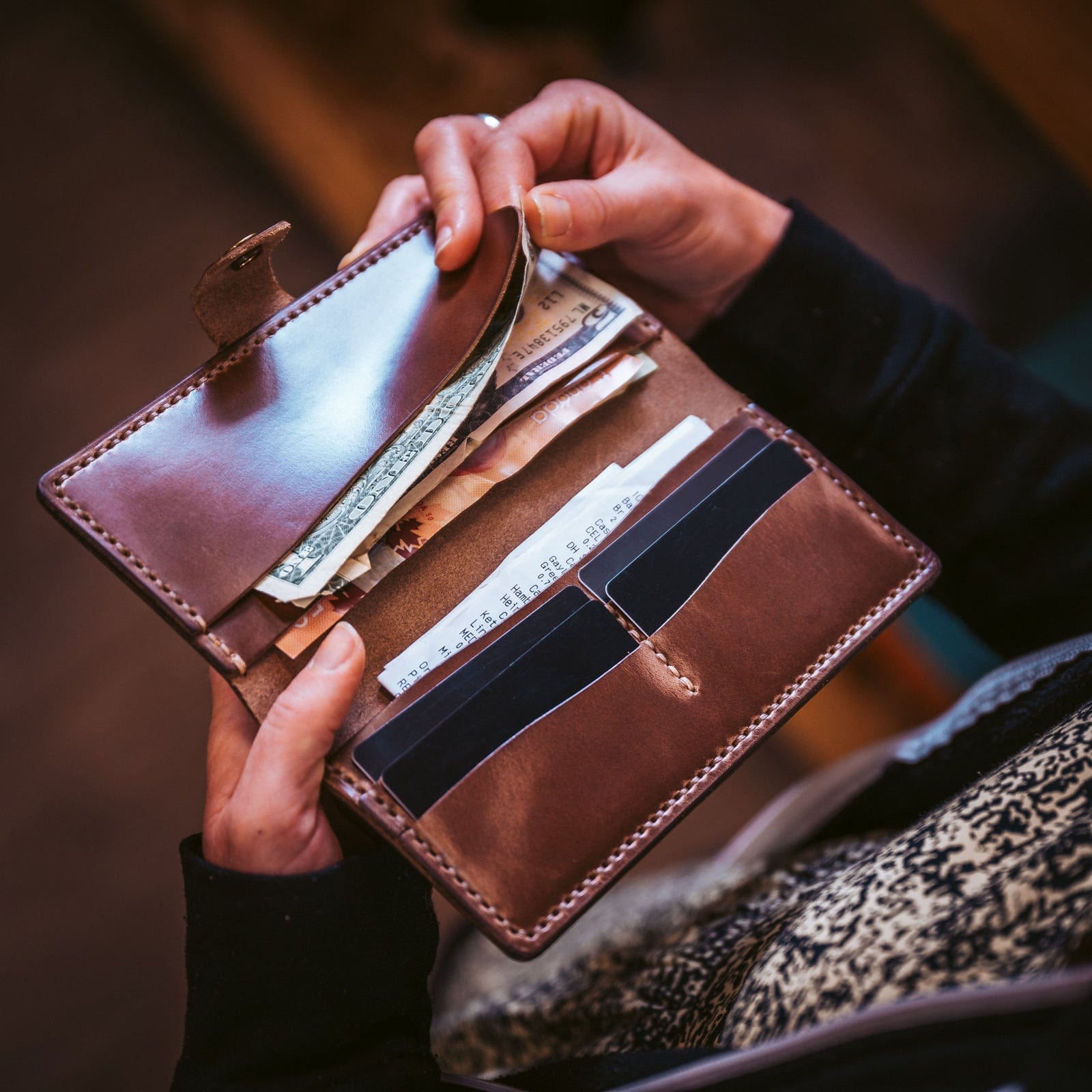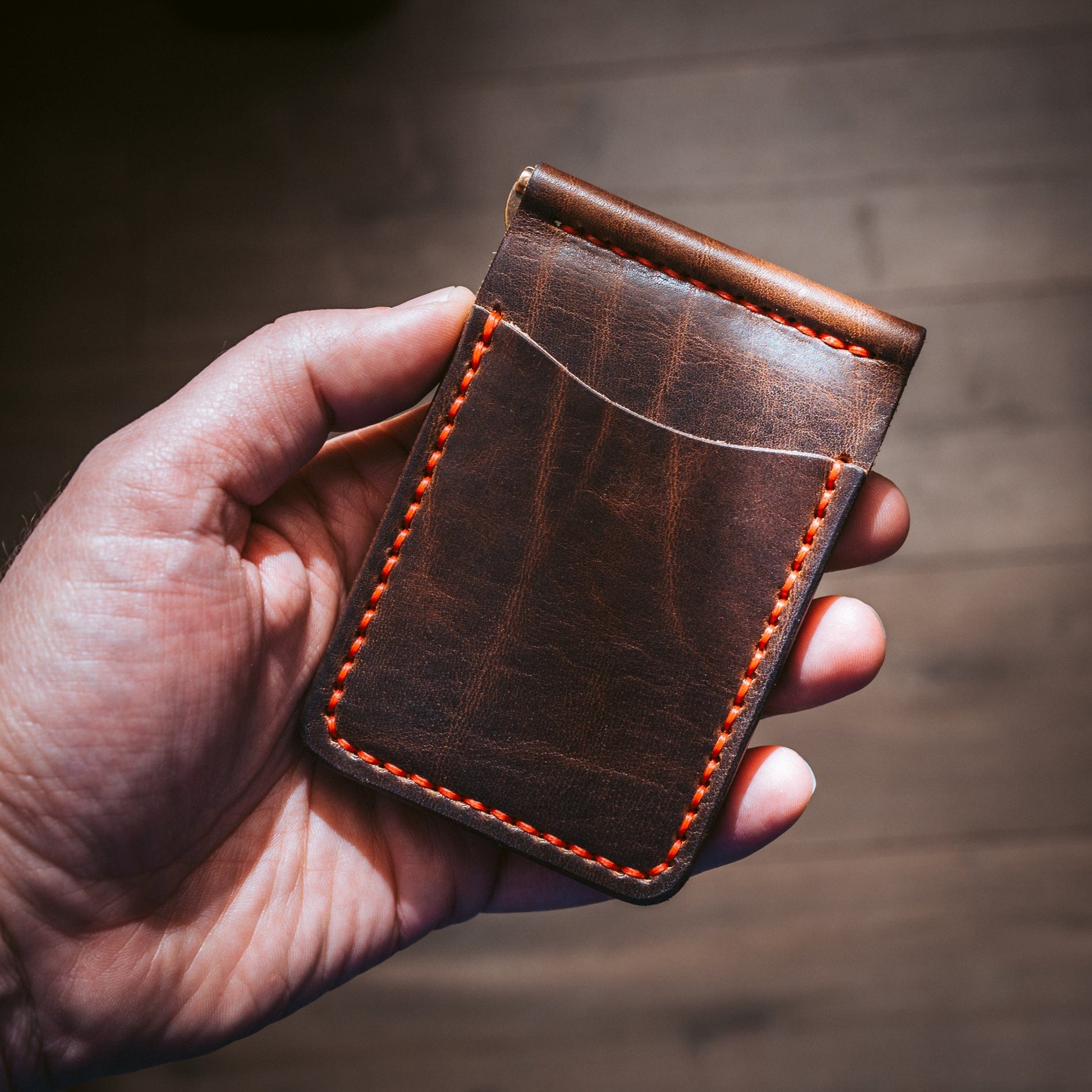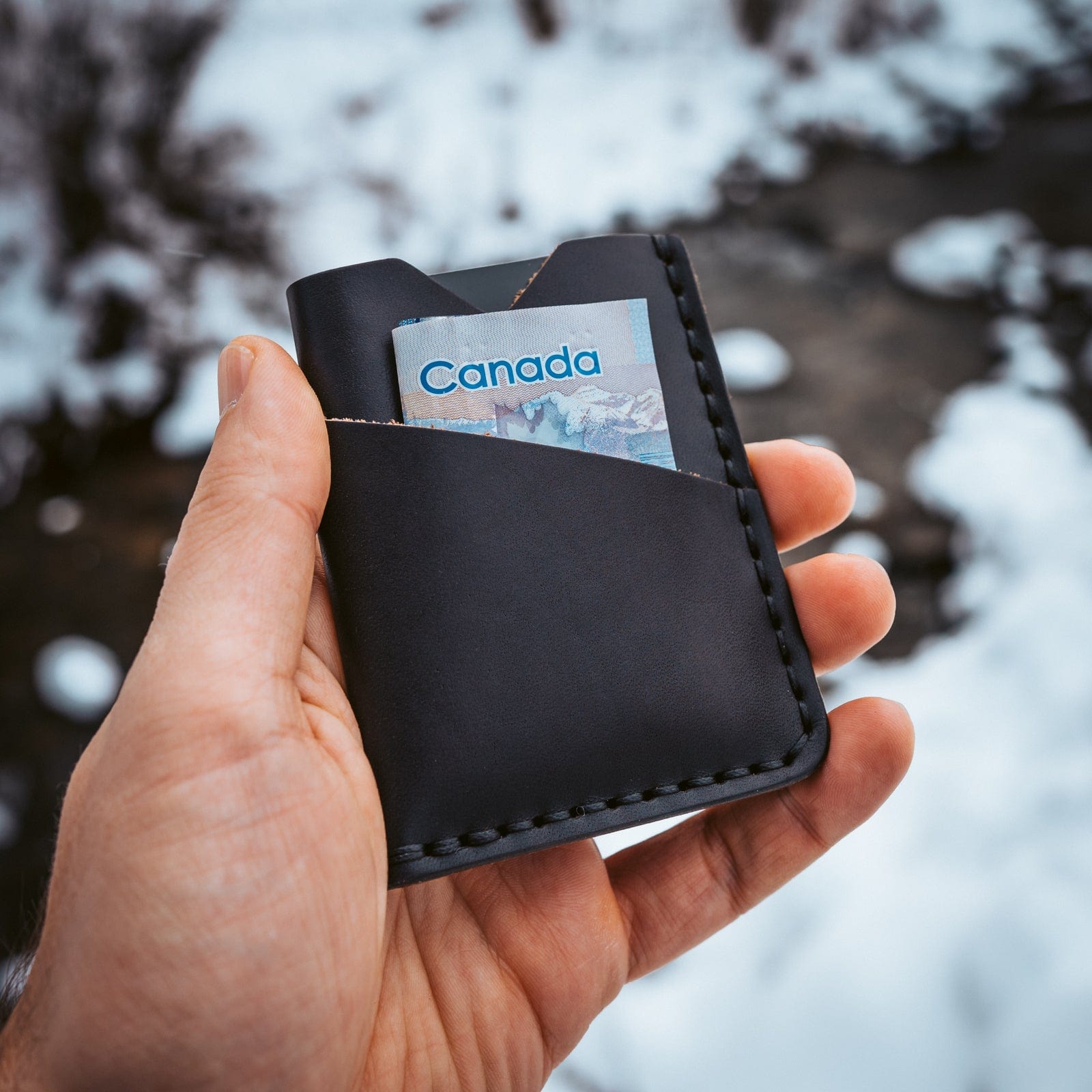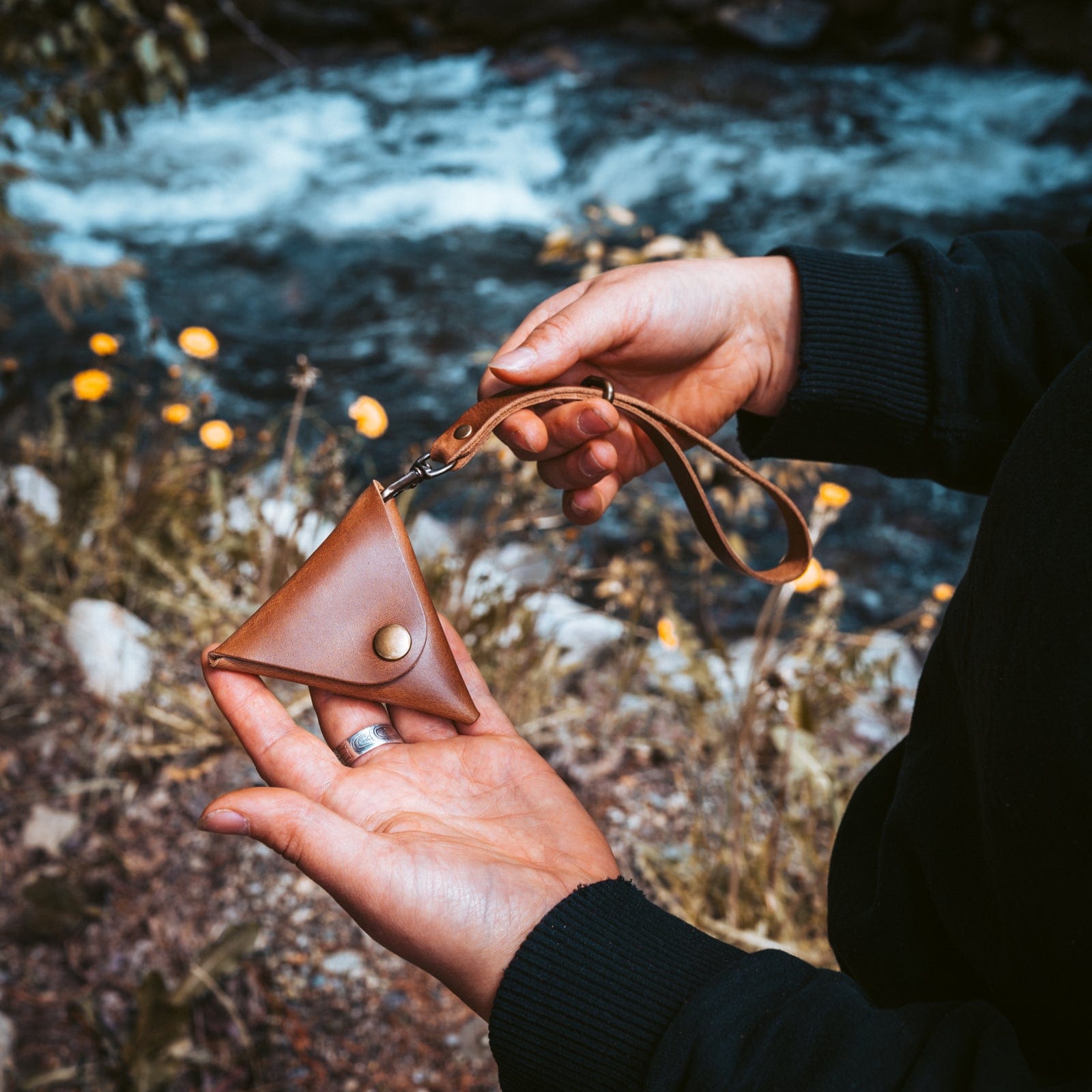LEATHER MONEY CLIP WALLET
A money clip wallet should do two things: hold your cash securely and organize your cards. We built ours with that simple goal, using full-grain leather- it's the best leather you can get and only improves with age. The brass spring clip keeps your bills in place without a struggle, while four card slots hold everything from your ID to your credit cards within easy reach. Each wallet is hand-stitched in our workshop and backed by a lifetime guarantee because that's how things should be made.
See the Money Clip Wallet